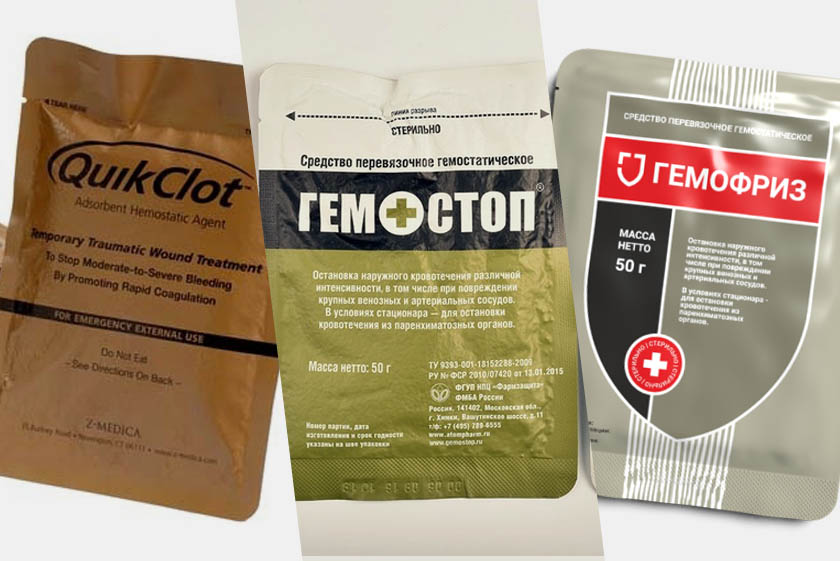History of development and effectiveness of new generation hemostatic

QuikClot
The ceolite-based hemostatic agent first appeared in TCCC recommendations in 2003: these were QuikClot granules. They quickly began to come back with two feedbacks «from the fields»: bleeding was effectively stopped, but the application was accompanied by a burn of soft tissues, the application proved painful.

The reason for this was that when zeolite absorbs water from the blood – there is a powerful heat release. In the first version of QuikClot pellets, the contact with blood in the wound could cause a sudden rise in temperature to 90°C. Of course, the manufacturer tried to find such a solution to preserve the hemostatic properties of zeolite but remove the heating effect. To some extent it was possible, the zeolite was initially slightly soaked with water, which reduced the heating temperature to 60°C. Then the manufacturer tried to take another step and the following hemostatics of the QuikClot range on a basis of zeolite stopped burning, nor have they shown any effectiveness in stopping the bleeding. However, for small wounds they continued to be used successfully.
Hemostop
The development and introduction into clinical practice of Russian hemostatic agents to stop bleeding at the site of injury is a promising scientific direction. In Russia, the drug «Hemostop» was produced on the basis of zeolite in the form-factor granules.

Based on the American Quikclot prototype. Hemostop was even included in the API, APG and APB-3 (individual, group and on-board first aid kits) and SOP (first aid bags) recommended by the Ministry of Defense. Like other first-generation hemostatics, the Hemostat effectively stopped bleeding but was also burned because the temperature in the wound area could increase to 90 degrees. At the moment, the drug is no longer produced, but it was the cause of the myth that hemostatic is better not to use. Yes, the Hemostat burned, but the benefits of its use exceeded possible shortcomings, it helped to avoid serious consequences and saved lives.
Already in the second generation hemostatics stopped burning, they had new pros and cons, and the active substance was supplemented by new components: kaolin, chitosan and mixture. The latter was not delayed in the recommendations for a long time, because it was considered unsafe due to the thrombosis caused by it.
Hemospas
The medical product «Hemospas» developed in the Russian Federation had a reduced effect of exothermic reaction in the wound area relative to the means «Hemostop», the temperature did not exceed 80 degrees. The experimental studies carried out showed that the drug did not lag behind «Hemostop», QuikClot and Celox in its effectiveness.
Hemofreeze
History of development of hemostatic agents based on synthetic zeolites in Russia continued with the company «Pharm-medik». A new generation of Zeolite-based hemostatic agent has appeared – «Hemofreeze», which is based on the same Zeolite structure NaFH, but the temperature in the wound area is reduced to an uncritical value of 75 degrees.

The product is a classic hemostatic life-saving aid in extreme conditions that, despite possible side effects, has repeatedly proven its effectiveness and saved many lives. The side effects are directly related to the proportion of the applied substance relative to the area of the wound. In the case of dislocated limbs, lacerations and extensive injuries, today “Hemofreeze” remains one of the most effective blood-stopping agents.
Proven effectiveness of new generation hemostatic
Today, the use of synthetic zeolite-based hemostatic agents is due to their maximum effectiveness in battlefield and extreme situations. It has been clinically proven that the number of repeated bleeding when using zeolite-based hemostatic is minimal in relation to chitosan or kaolin (produced in the RF, but not having a raw material base on the territory of the RF). They are easy to use and have an additional antibacterial effect, which is also important in first aid in the field, unsterile conditions.
 News
News

